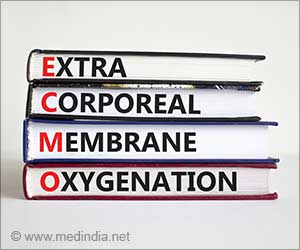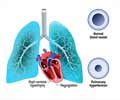In case of cardiac failure where the ejection fraction is greater than 40%, sacubitril/valsartan can prove to be quite beneficial

Potential Treatment Benefit of Sacubitril/Valsartan
“These data add to the evidence supporting a potential treatment benefit of Sacubitril/valsartan in patients with EF over 40% and particularly in those with EF below normal (<60%). The findings may influence future guidance for the use of the drug in this population, both in and out of the hospital and for those with acute, chronic or de novo heart failure,” said principal investigator Dr. Robert Mentz of Duke University Medical Center, Durham, US. Guidelines recommend consideration of sacubitril/valsartan to reduce hospitalizations in patients with heart failure with preserved EF (HFpEF; EF >50%) and/or mildly reduced EF (HFmrEF; EF 41-49%). Recommendations differ around the world, with some noting benefits are more evident in those with EF on the lower end of this spectrum (i.e. below normal) (1✔ ✔Trusted Source2021 ESC Guidelines for the diagnosis and treatment of acute and chronic heart failure
Go to source).
‘Sacubitril/Valsartan has a greater reduction in plasma nt-pro-BNP levels in heart failure patients with EF above 40% #heartfailure #sacubitril/Valsartan’





The PARAGON-HF trial excluded patients with decompensated heart failure, but a posthoc analysis suggested a larger benefit with sacubitril/valsartan in those recently hospitalized.Whether initiation of sacubitril/valsartan is safe and effective in patients with EF over 40% stabilized after a worsening heart failure event was unknown. In addition, further data were needed in populations excluded by PARAGON-HF (estimated glomerular filtration rate [eGFR] <30 ml/min/1.73 m2, systolic blood pressure <110 mmHg, and body mass index [BMI] >40 kg/m2).
PARAGLIDE-HF evaluated the effect of sacubitril/valsartan versus valsartan on changes in NT-proBNP, safety, and tolerability in heart failure patients with EF above 40% who had been stabilized after a worsening heart failure event (2✔ ✔Trusted Source
Rationale, Design and Baseline Characteristics of the PARAGLIDE-HF Trial: Sacubitril/Valsartan vs Valsartan in HFmrEF and HFpEF With a Worsening Heart Failure Event
Go to source).
The primary endpoint was the time-averaged proportional change in NT-proBNP from baseline through Weeks 4 and 8. It was chosen to mirror the PIONEER-HF trial, which found that among patients with heart failure with reduced EF (<40%) who were hospitalized for acute decompensated heart failure, sacubitril/valsartan led to a greater reduction in NT-proBNP concentration than enalapril.
Impact of Sacubitril/Valsartan: The Study
Patients were recruited from 100 sites in the US and Canada. A total of 466 patients with EF above 40% were enrolled within 30 days of a worsening heart failure event (69% were enrolled while in the hospital).The average age was 70 years, 52% were women and 22% were Black. Participants were randomly allocated in a 1:1 ratio to sacubitril/valsartan or valsartan.
Advertisement
The secondary composite hierarchical outcome consisted of a) time to cardiovascular death, b)number and timing of heart failure hospitalizations, c) number and timing of urgent heart failure visits, and d) time-averaged proportional change in NT-proBNP from baseline to Weeks 4 and 8.
Advertisement
The hierarchical outcome favored sacubitril/valsartan (as did each of the components) but was not significant (unmatched win ratio 1.19; 95% CI 0.93–1.52; p=0.16).
Regarding other secondary endpoints, compared with valsartan, sacubitril/valsartan reduced worsening renal function (odds ratio [OR] 0.61; 95% CI 0.40–0.93). There was more symptomatic hypotension in the sacubitril/valsartan group (OR 1.73; 95% CI 1.09–2.76).
Importantly, subgroup analyses showed evidence of a larger treatment effect in those with EF ≤60% for the change in NT-proBNP (0.78; 95% CI 0.61-0.98) and the hierarchical outcome (win ratio 1.46; 95% CI, 1.09–1.95) (3✔ ✔Trusted Source
Angiotensin-neprilysin inhibition versus enalapril in heart failure
Go to source).
Dr. Mentz said: “PARAGLIDE-HF complements PARAGON-HF by focusing on patients stabilized after a worsening heart failure event with EF above 40% similar to the manner in which PIONEER-HF complemented PARADIGM-HF in patients with reduced EF. PARAGLIDE-HF had no run-in period, allowed both newly diagnosed heart failure and improved EF, included those with acute heart failure without specific echocardiographic requirements, and overall had a diverse study population (52% women, 22% Black individuals). The trial also permitted patients with eGFR down to 20 ml/min/1.73 m2, systolic blood pressure as low as 100 mmHg, and any BMI. The broad and diverse population included in PARAGLIDE-HF supports the generalisability of these data to similar patients seen in routine practice.”
References:
- 2021 ESC Guidelines for the diagnosis and treatment of acute and chronic heart failure - (https://pubmed.ncbi.nlm.nih.gov/34447992/)
- Rationale, Design and Baseline Characteristics of the PARAGLIDE-HF Trial: Sacubitril/Valsartan vs Valsartan in HFmrEF and HFpEF With a Worsening Heart Failure Event- (https://pubmed.ncbi.nlm.nih.gov/36796671/)
- Angiotensin-neprilysin inhibition versus enalapril in heart failure - (https://pubmed.ncbi.nlm.nih.gov/25176015/)
Source-Eurekalert















